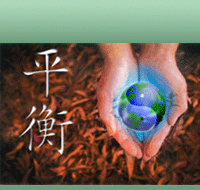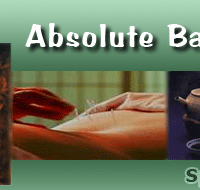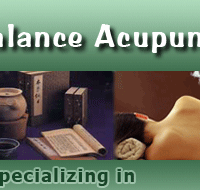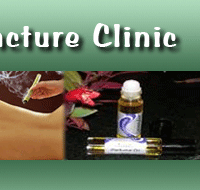| |
|
|
Q:
What is Acupuncture?
A: Acupuncture is a holistic system of healing,
developed and refined in the Far East over a period of more
than 2500 years. Acupuncture points are areas of designated
electrical sensitivity shown to be effective in the treatment
of specific health problems. While perhaps best known for pain
relief, traditional acupuncture is used to maintain health and
treat a wide range of illnesses. It focuses on the patient's
overall well-being, rather than treating only specific, isolated
symptoms. The basic premise of all Oriental medicine is that
health is dependent on the body's life force, "Qi"
(pronounced "chee"), flowing in a smooth and balanced
way through the network of meridians (channels) connecting all
major organs. Qi consists of equal and opposite qualities, known
as yin and yang. When the Qi is disturbed, these become unbalanced,
resulting in illness. Any number of factors, such as anxiety,
stress, poor nutrition, weather conditions, hereditary, infections,
toxins and trauma, can disturb the flow of Qi. The acupuncturist
restores the balance by inserting fine sterilized needles into
the channels of energy, stimulating the body's own natural healing
mechanisms. As a holistic method, the principal aim of acupuncture
is to restore equilibrium between a person's physical, emotional
and spiritual aspects.
The skill of the acupuncturist lies in his/her
ability to make a traditional diagnosis from what is often a
complex pattern of disharmony. The nature of the disharmony
is unique to each individual, and with traditional acupuncture,
is treated as such with a personalized treatment plan. Your
practitioner will make a Chinese medical diagnosis based on
a thorough examination and consultation. [Top]
|
|
Q:
What is moxibustion?
A: moxibustion is an Oriental medicine heat
therapy utilizing moxa, or mugwort herb (Artemisia Vulgaris).
It plays an important role in many Asian traditional medical
systems. During the moxibustion, the specially processed leaves
of Artemisia Vulgaris are burned at or above the acupuncture
points to warm regions with the intention of stimulating circulation
and inducing a smooth flow of Qi and Blood. BURINING MOXA PIC.
The word moxa comes from Japanese mogusa
(the u is not very strongly enunciated). The Chinese character
for moxa forms one half of the two making up the Chinese word
that often gets translated as "acupuncture" zhenjiu.
[Top]
|
|
Q:
How do I choose an acupuncturist?
A: Your results with acupuncture will depend
to a great extent on the provider you choose. We recommend finding
an acupuncturist with whom you feel comfortable. If you like
and trust your practitioner, your experience will be more positive.
It is also important to know about the acupuncturist's training
and experience, and what to expect from the treatment. The clearer
you are about who is treating you and exactly what the treatment
involves, the more you will be able to relax during the acupuncture
session and benefit from this ancient form of health care.
Credentials to Look For:
Acupuncture is an acknowledged and respected
field of medicine, and most states, provinces and countries
requires formal training and certification. In particular, the
United States has rigorous training standards for acupuncturists.
Most states require a 4-year Masters degree in Acupuncture (MSAC)
or Traditional Oriental Medicine (MSTOM) from an accredited
acupuncture school. In addition, an acupuncturist must pass
written and practical state and/or national board exams in order
to become licensed. Training includes all aspects of Western
medicine as well as Traditional Oriental Medicine. If you live
in a state that does not require licensing, choose an acupuncturist
certified by the National Certification Commission for Acupuncture
and Oriental Medicine. Its members are required to have a degree
in Acupuncture or Oriental Medicine (Acupuncture and Herbal
Medicine) from an accredited school, or have worked as an apprentice
acupuncturist for at least four years, and passed both written
and practical national board exams. Those who have passed the
acupuncture portion of the exam are entitled to add "Dipl
Ac." (Diplomate of Acupuncture) to their names. Practitioners
of Traditional Oriental Medicine have passed the exams required
for the Dipl.Ac. and the Herbal Medicine exam. [Top]
|
|
Q:
Does the patient have to believe in acupuncture for it to work?
A: No. Acupuncture has been used to successfully
treat cats, dogs, horses and other animals in a number of well-documented
veterinary acupuncture studies. These animal patients do not
understand or believe in the process that helps them get better.
[Top]
|
|
Q:
Does it hurt?
A: Acupuncture employs very thin, disposable
steel needles 1/4 mm in diameter and 1 to 1.5 inches in length.
The needle is solid and made from stainless steel. The point
is smooth (not hollow with cutting edges like a hypodermic needle)
and insertion through the skin feels very different from the
injections or blood sampling. Most patients feel only a minimal
pricking pain as the needles are inserted; some do not feel
anything at all. Once the needles are in place, there is no
pain felt. Although, it is considered normal and even beneficial
to feel certain sensations at some acupuncture points during
the treatment. You might feel tingling, distention, warmth,
mild aching around the needle or traveling up or down the involved
meridian.
Most patients find treatments very relaxing and it is a common
practice for patients to fall asleep during the treatment. [Top]
|
|
Q:
How many treatments and how often will I need them?
A: That depends on duration, severity and
a nature of your complaint. You may need only 2-4 treatments
two-tree times a week for an acute problem. For long-term, chronic
conditions, it might take dozens of treatments starting from
a few times a weeks and graduating to once a week session as
the condition is significantly improved. Generally, the longer
the condition has existed and the more serious condition is,
the more treatments will be necessary. As a rule, a relatively
intense treatment schedule in the beginning will at the end
cut down on the total number of treatments and speed up the
recovery process. For health maintenance and general well-being,
once a month treatment may be all that is necessary. [Top]
|
|
Q:
How long will a treatment take?
A: Depending on your condition and a protocol
used, treatment might take anywhere from 30 minutes to an hour.
[Top]
|
|
Q:
How does acupuncture work?
A: Traditional acupuncture is based on the
ancient Chinese theories of the flow of Qi (Energy)(pronounced:
Chee) and Xue (Blood) through distinct meridians or pathways
that cover the body in a way that nerves and blood vessels do.
There is an old Chinese saying, “If there is free flow - there
is no pain; if there is no free flow - there is pain”. According
to the ancient theory, acupuncture removes blockages in the
meridians and allows Qi to flow to the areas where it is deficient
and away from where it’s excessive, regulating and restoring
the energetic balance of the body.
The modern scientific explanation is
that needling the acupuncture points stimulates the nervous
system to release chemicals in the muscles, spinal cord, and
brain, including endorphins, enkephalins and other neurotransmitters.
Either these chemicals will change the experience of pain, or
they will trigger the release of other chemicals and hormones
that influence the body's own internal regulating system, bringing
about a normalizing effect on neuroendocrine function. The improved
energy and biochemical balance produced by acupuncture results
in stimulating the body's natural healing abilities, and in
promoting physical and emotional well-being.
For more details on Western explanations of possible acupuncture
mechanisms click here.
[Top]
|
|
Q:
What will happen on my first visit?
A: For your initial consultation, the acupuncturist
needs to assess your general health. You will be asked about
your current symptoms and any treatment you have received so
far. It is also important to gather detailed information about
your medical history and that of your family, your diet, digestive
system, sleeping patterns and emotional state. To discover how
the energies are flowing in your body, the acupuncturist is
likely to check your pulse. The structure, color and coating
of your tongue also provide keys to your physical health.
Stimulation of specific areas affects the functioning of various
organs. However, those areas may not be close to the part of
the body where you are experiencing a problem. For example,
if you suffer from headaches, needles may be inserted into your
foot or hand. There are around 500 acupuncture points on the
body, and an experienced acupuncturist will use a selection
of perhaps 10 or 12 of these for each treatment. Often during
the course of treatment, different points will be selected as
the patient's condition changes. The acupuncturist may also
supplement needle treatment with moxa, a smoldering herb used
to warm acupuncture points. Other methods include lasers or
electro-acupuncture. Massage, or tapping with a rounded probe,
are techniques particularly suitable for small children or for
people with a fear of needles.
We recommend wearing loose, comfortable clothing
to receive acupuncture treatment. You should also be aware that
the acupuncturist might need to access points on your torso,
arms and legs. [Top]
|
|
Q:
Is it safe?
A: Yes. Licensed acupuncturists required to
pass and be certified in the Clean Needle Technique exam that
ensures safety of the treatment. Acupuncturist in this office
uses only sterilized, individually packed, disposable needles
that never saved or used in multiple treatments, which eliminates
the possibility of transmitting a communicable disease by a
contaminated needle. [Top]
|
|
Q: Are
there “Do’s and Don’ts” for a patient on a day of treatment?
A: Yes, the following suggestions will help
you get the maximum benefits from your treatment:
-
Maintain good personal hygiene to reduce the possibility
of bacterial infection.
-
Wear loose clothing and if possible, avoid wearing tight
stockings.
-
Avoid treatment when excessively fatigued, hungry, full,
emotionally upset, or shortly after sex.
-
Avoid eating a big meal within one hour of your appointment
(digestion alters the pattern of your pulse)
-
Avoid alcohol, tobacco, food or drinks that color your
tongue (such as coffee) immediately prior to treatment or
just following a treatment
-
Plan your activities so that after the treatment you
can get some rest, or at least not have to be working at
top performance. This is especially important for the first
few visits.
-
Remember to keep good mental or written notes of what
your response is to the treatment. This is important for
your doctor to know so that the follow-up treatments can
be designed to best help you and your problem.
-
Continue to take any prescription medicines as directed
by your regular doctor.
-
Please bring with you any information about your case
you may have from your other doctors, including things like
lab tests, blood work, reports of x-rays or MRI's, etc.
To save time you may fill out our office forms before coming
into the office.
-
Relax; there is no need to be frightened. Ask your practitioner
any questions you have along the way so that you can get
the most benefit possible from the treatment.
-
During the treatment, do not change your position or
move suddenly. If you are uncomfortable, tell your practitioner.
-
Very few people experience dizziness, nausea, cold sweat,
shortness of breath, or faintness during treatment. This
can occur if you are nervous. Inform your practitioner immediately
so he or she can readjust or withdraw the needles. Also,
let your practitioner know if you feel an increasing amount
of pain or burning sensation during the treatment.
-
If you find your treatment unbearable at any point,
be sure to speak up so that your practitioner can make proper
adjustments or stop the treatment.
It also helps to be in a calm state. Try to arrive 10 or
15 minutes before your appointment to give yourself a chance
to relax. Comfortable, loose clothing should be worn, and
you should not wear any metallic jewelry, watches, or earrings.
Makeup and nail polish should be minimized or eliminated.
Please also avoid the use of perfumes, colognes or strongly
scented cosmetics. [Top]
|
|
Q:
What can I expect after the treatment?
A: You may note a spot of blood at one or
more of the needle sites and/or a small bruise could develop.
These should not be harmful, but please talk to your practitioner
if you are concerned. Patients often experience the most dramatic
results after the first treatment. Some patients experience
an immediate total or partial relief of their pain or other
symptoms. This relief may last or some pain may return after
a day or so. In a few cases, there may be no immediate relief,
but patients notice the diminishment of pain over the next couple
of days. Generally, you should expect to feel better, but in
some small percentage of cases, the treatment provokes a “healing
crisis”; in such cases, the pain actually increases as a result
of the treatment. This is actually a positive sign and usually
indicates that relief will follow subsequent treatments. [Top]
|
|
Q:
Should I tell my doctor?
A: Absolutely! Acupuncture is a legally accepted
branch of Complementary Alternative Medicine (CAM) in the US,
just like chiropractic manipulations. Only combining the Western
and Eastern medical care we can reach optimum health and well-being.
If you are receiving treatment from your doctor, then it makes
sense to tell him/her about your intention to have acupuncture.
Feel free to give your medical doctor any and all information
about your acupuncture provider and encourage them to contact
us. At the same time, you should always inform your acupuncturist
of any other treatment you are receiving, such as medications,
as this may affect your response to the acupuncture treatment.
[Top]
|
|
Q:
Should I continue with my prescribed medication while receiving
acupuncture treatments?
A: Yes, at least until you have thoroughly
discussed your options with your doctor or the practitioner
who prescribed the medication. Many people seek the help of
an acupuncturist because of dissatisfaction with drug treatment
- whether it does not seem to be working or there are unacceptable
side effects. However, DO NOT stop taking any medication without
professional guidance. [Top]
|
|
Q:
How effective is acupuncture?
A: Acupuncture is highly effective not only
as a preventative medicine, but as a drug-free treatment of
signs and symptoms. Studies indicate that acupuncture influences
the central and peripheral nervous system and evidence shows
it releases endorphins from the brain, which makes acupuncture
particularly effective in pain control. Among a host of factors,
acupuncture affects sugar, cholesterol, and triglyceride levels
in the blood; the functioning of the gastrointestinal system;
and the activity of the endocrine system. Acupuncture works
with the body, strengthening and balancing energy. It improves
circulation and allows the body to heal itself more quickly
and more completely. [Top]
|
|
Q:
What if I don’t have any health problems? Can acupuncture enhance
my health or prevent future problems?
A: Yes. Acupuncture has traditionally been
used as a preventive medicine. Recent research has now verified
that acupuncture stimulates immune function, which increases
resistance to bacterial and viral infections. Acupuncture can
dramatically increase overall vitality and energy. It treats
underlying causes, resulting in a deeper kind of healing. It
brings about profound changes in peoples¹ lives on the emotional
level as well. Many people find that occasional acupuncture
tune-ups are the best medicine to feel "in sync" and
insure continuing health. [Top]
|
|
|



